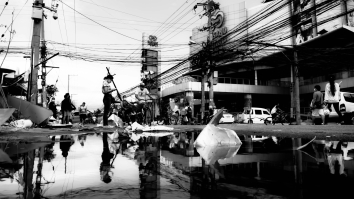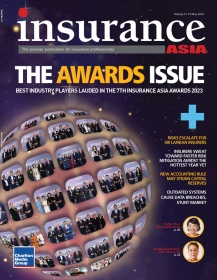Insurers must embrace digital to thrive post COVID-19
By Bernhard KotankoWhen cities and countries across the world finally come out of lockdown, the society that emerges will be fundamentally different. Post COVID-19, people will continue to increase interacting with friends, family, businesses and governments via digital channels. For insurers, this new approach poses a significant transformation challenge and opportunity. Challenge because the industry is encumbered with numerous legacy systems that are hard to update and a distribution model that still relies mainly on face-to-face interactions and a product push model. Opportunity because this a time when customers seek advice and solutions from their insurers and are open to engage in new ways; also because some of the resistance to new ways of working and engaging has just been taken out by the new normal in a (post) COVID-19 world.
Insurers now need to take 3 main transformation shifts at pace and with bold ambition and effort to capture the opportunities rather than being challenged by the COVID new normal.
#1: Shift from product push to customer first
With COVID-19 consumers’ sentiment and behaviour are changing fundamentally. For insurers, this requires a shift from a traditional product push model to really putting customers first.
Our consumer sentiment surveys across Asia show 80% of people are more concerned about their families’ and their own health and protection, as well as similar concern about negative financial repercussions from COVID-19. Behaviour has become more digital with 25-40% of customers having begun to use digital engagement models in wellness, fitness, medical and financial services – with another 35-45% of consumers increasing their utilisation of such digital formats.
Consumer expectation from insurers is to change their engagement model. 73% of consumers in China “hope their agent can give personalized needs-based products and services”. But 85% criticise that today “my insurance agent is always trying to sell… products”.
The future for insurers has to be to finally make the shift from push selling to engaging with their customers based on understanding their needs, creating customer learning and new experiences. And a big portion of these interactions along customer journeys, likely 65-75%, will be predominantly digital.
#2: Shift from face-to-face to digital hybrid distribution
COVID-19 has proven that digital hybrid distribution works and that major activities in running the distribution as well as in engaging with customers can be shifted to digital models, underpinned with stronger data and analytics. We surveyed agents in China upon their experience throughout COVID and the responses are widely positive. 69% of agents felt their efficiency has gone up and about 55% found their companies’ digital support helpful.
Hence, there has never been a better time to encourage agents and other distribution partners to embrace digital. Using existing technologies, such as video, chat functions and other online platforms, sales teams can rapidly shift from paper-based to virtual processes, which will help increase productivity and convert new prospects. For example, a large Chinese insurer recently introduced an online health-service application process, which has led to a significant uptick in new registrations over the last few months.
#3: From time lags to real-time in customer operations and claims
For many consumers and businesses, the current processes in administering their insurances and for making a claim are slow, clunky and inconvenient. As insurers start to receive more and more requests and claims relating to COVID-19, it’s critical that they simplify the way they are handling these important customer experience moments.
Insurers can do this by adopting chatbots and interactive-voice-response systems that reduce turnaround times whilst freeing up staff time to focus on more complex, higher-value engagements. On the analysis side, natural language and image processing technologies can reduce the need for in-person visits and follow-ups while increasing remote fraud and experience control.
For all 3 shifts insurers need to invest heavily in establishing the way of working, the capabilities and the culture required. This includes upskilling current employees as well as hiring talent from outside the company who bring new approaches and innovative ideas with them.
If insurers take these steps, and act decisively, they can turn the disruption caused by COVID-19 and emerge from the current crisis more appreciated by their customers, more distinctive in their propositions and more resilient for future challenges.























 Advertise
Advertise










